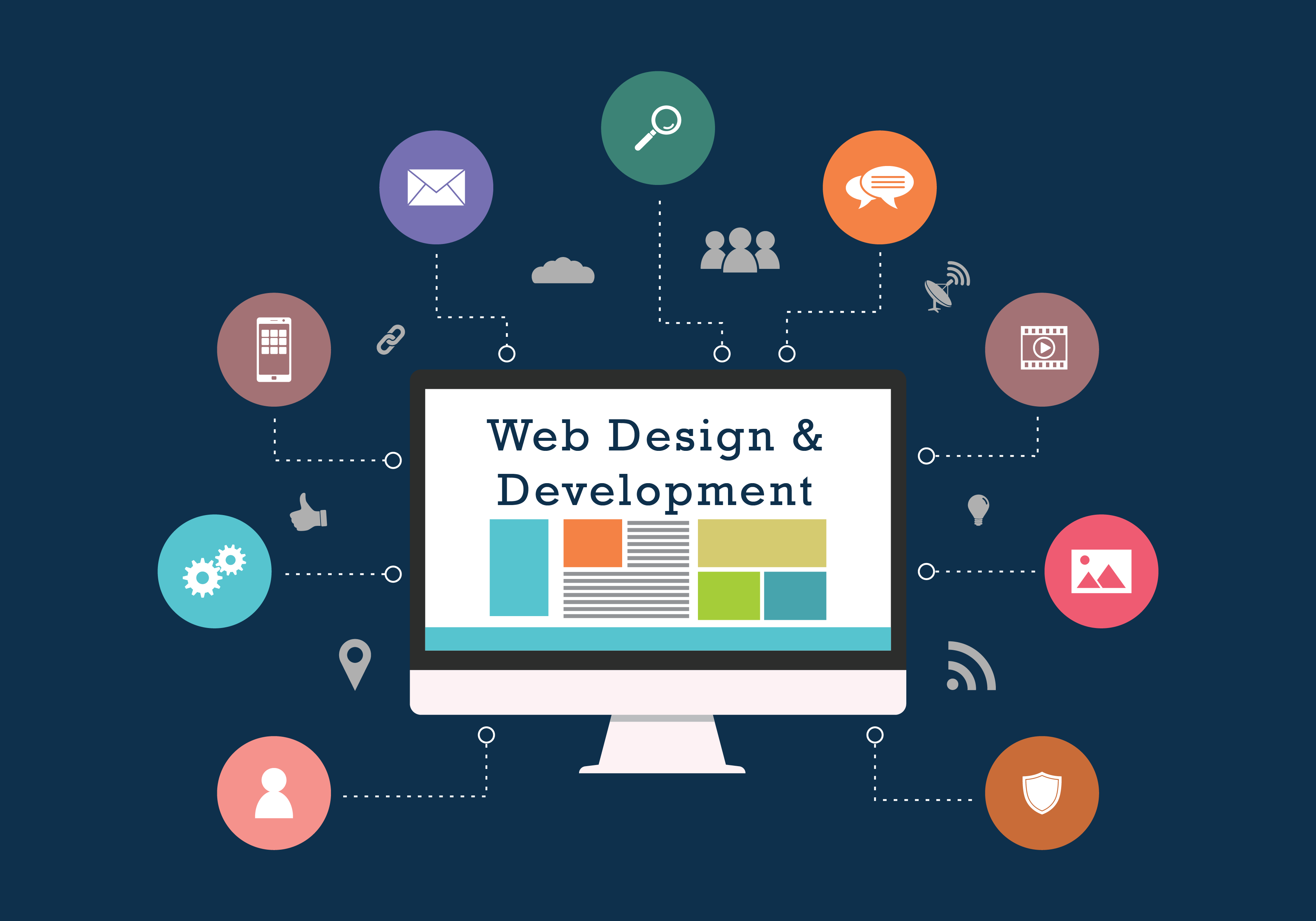Key Trends in Modern Web Style That Every Programmer Need To Know
A minimalistic style strategy is obtaining traction, highlighting simplicity while improving individual experience through rapid load times and accessibility. Mobile-first strategies and the current assimilation of dark setting options are improving how individuals interact with electronic material.

Minimalistic Layout Technique
The minimalistic style approach has actually arised as a defining trend in modern-day website design, defined by its focus on simpleness and capability. This style approach supporters for the reduction of elements to their important forms, enabling a cleaner and extra user-friendly user experience - Web design in Penang. By removing unneeded distractions, minimalism helps with clearer interaction of content, making certain that users can browse sites easily
Among the key advantages of minimalistic layout is its capability to enhance tons times and total internet site efficiency. Less graphical components and streamlined coding result in quicker page display screens, which is important in preserving site visitor involvement. Additionally, this strategy fosters a sense of beauty and professionalism, commonly straightening with brand name worths that focus on quality and effectiveness.
Moreover, minimalistic design is naturally adaptable across different tools and screen dimensions, making certain uniformity in user experience. The concentrate on typography and whitespace creates an aesthetically attractive design that overviews individuals towards critical activities, such as phone call to activity or crucial info.
Emphasis on Accessibility
Recognizing the diverse needs of users, modern web design significantly highlights ease of access as a basic concept. This shift is driven by the understanding that websites should be functional by individuals with differing capacities, consisting of those with aesthetic, acoustic, electric motor, and cognitive specials needs. Making sure availability not only aligns with moral factors to consider but likewise broadens the potential target market for internet content.
Secret methods in boosting availability consist of using semantic HTML, which gives purposeful context to assistive technologies, and the execution of ARIA (Accessible Rich Internet Applications) roles to boost navigation for individuals reliant on screen viewers. Shade contrast, text dimension, and receptive design elements additionally play substantial functions in making web content extra accessible.
Moreover, incorporating keyboard navigating alternatives allows individuals with wheelchair impairments to interact with internet user interfaces seamlessly. Normal availability audits and customer screening with people with disabilities can better refine layout choices and determine potential obstacles.
Eventually, focusing on access not just satisfies legal demands yet also promotes an inclusive electronic setting, improving the general user experience while enhancing the brand name's commitment to social responsibility.
Mobile-First Approaches
As ease of access comes to be a foundational element of internet design, the concentrate on mobile-first strategies has actually gained prestige. This approach focuses on the mobile individual experience, making certain that web sites are developed for smaller screens and touch communications before adjusting to bigger displays. Provided the substantial boost in smart phone usage for surfing, implementing mobile-first techniques is necessary for reaching a broader audience efficiently.
Mobile-first design motivates developers to develop structured, reliable formats that load promptly and work flawlessly on mobile phones. This involves concentrating on crucial features and content, reducing unneeded elements that can detract from individual experience. By adopting a mobile-first state of mind, developers can enhance site performance, as lots of design principles and optimizations for smart phones translate well to desktop atmospheres.
Additionally, online search engine significantly favor mobile-optimized sites in their this contact form ranking algorithms, making mobile-first style not just an ideal practice yet additionally an important aspect for search engine presence - Web design in Penang. By accepting this method, programmers can produce comprehensive, user-friendly websites that deal with diverse audiences, eventually leading to greater engagement and satisfaction across all platforms. In a digital landscape where mobile usage proceeds to rise, focusing on mobile-first style is both a critical and essential approach
Dark Mode Integration
Several individuals appreciate the option of dark setting in modern-day internet design, as it not only boosts aesthetic charm however additionally enhances readability in low-light environments. This design trend has gotten grip, driven mostly by customer demand and the increasing recognition of eye stress associated with extended direct exposure to bright displays.
Dark mode combination enables designers to produce visually striking interfaces while maintaining use. By using a darker color palette, designers can minimize glow and decrease tiredness, which is especially beneficial for individuals that invest prolonged durations on their tools. Dark mode can extend battery life on OLED screens, an added advantage for mobile individuals.
When executing dark setting, developers should make certain that color contrasts are maximized to maintain readability. Crucial element such as message, icons, and interactive parts should be plainly appreciable versus darker histories. It is also important to provide customers with the ability to toggle in between light and dark modes effortlessly, accommodating individual hop over to here choices and environmental contexts.

Dynamic Content Experiences
In the world of modern-day website design, dynamic content experiences have actually become a transformative technique that improves individual engagement and communication. By leveraging real-time information and customer behavior, websites can supply tailored web content customized to private preferences and demands (Web design in Penang). This flexibility not only improves customer contentment but also drives greater conversion rates
Dynamic web content can take numerous forms, such as personalized item suggestions, location-based information, and contextually appropriate short articles. Technologies like AJAX and server-side scripting allow for smooth updates without requiring a complete page reload, making certain a smoother individual experience. The combination of fabricated intelligence and equipment knowing additionally refines these experiences by examining customer interactions and adjusting material appropriately.
The execution of important site dynamic material experiences also provides possibilities for A/B testing and efficiency optimization. By constantly analyzing customer information, developers can make enlightened adjustments to make best use of involvement and retention. As individuals progressively expect customized experiences, accepting vibrant content will certainly be critical for developers aiming to produce sites that reverberate with their target market. In summary, dynamic web content experiences stand for a considerable pattern in contemporary web design, forming the future of digital interaction and customer contentment.

Conclusion
In verdict, the landscape of modern web style is formed by several crucial fads that enhance customer experience and interaction. A minimalistic design strategy focuses on capability, while accessibility guarantees that varied individual needs are met.